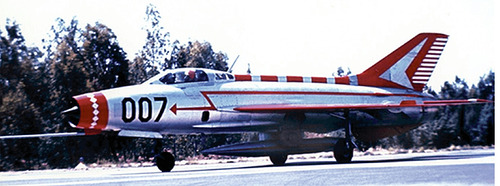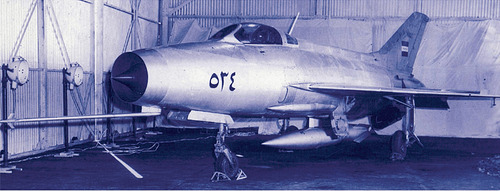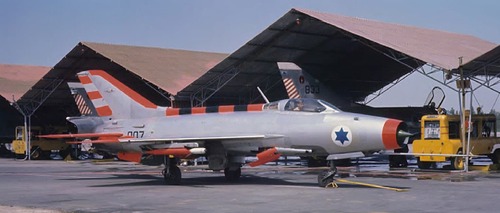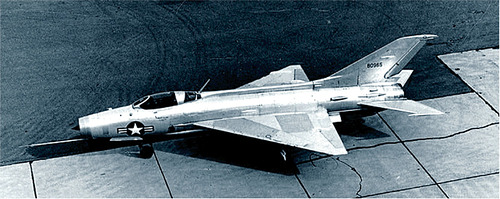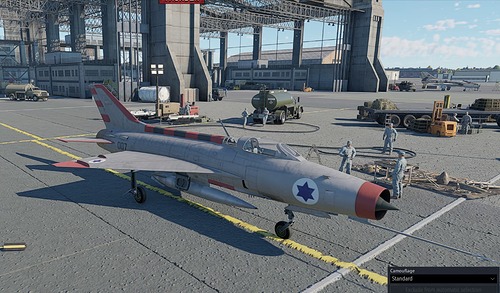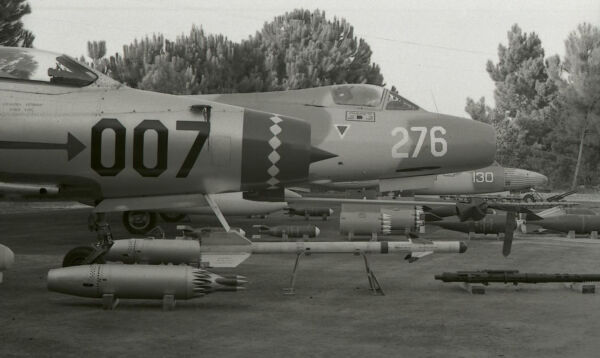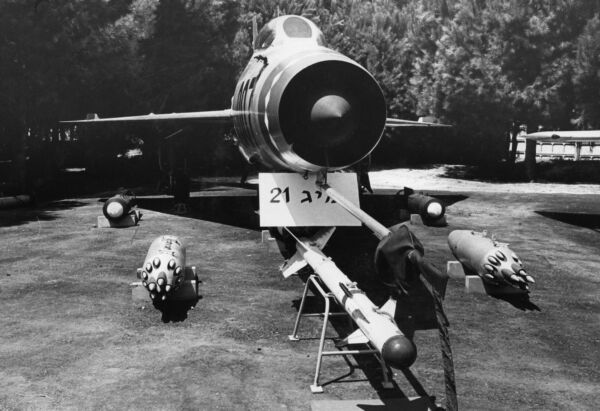- Yes
- No
- Tech tree
- Event
- Squadron
- Premium
- Voted no
(First suggestion!)
I would like to suggest the addition of a MiG-21 rich in history. This particular jet, part of an initial batch of 16 MiGs given by the USSR in 1962 and bearing tail number “534” in the Iraqi Air Force, became famous as “007” in Israeli service.
This aircraft rose to prominence in 1966 as the first MiG-21 “Fishbed” captured by the West and was eventually prepared for combat service shortly before the Six-Day War in 1967.
This suggested aircraft can fit in an exclusive Fighter-Interceptor role for Rank VI, which mostly consist of jet bombers and strike fighters that lack the acceleration and speed this aircraft offers.
History:
Spoiler
On August 16th, 1966, Munir Redfa, an Iraqi Air Force pilot of Assyrian-Christian descent, defected to Israel in a top-secret Mossad operation known as Operation Diamond.
In the mid-1950s, Arab countries began acquiring Soviet weapons through arms deals with the communist bloc, creating a major intelligence gap for Israel —particularly regarding air defense and aircraft systems. To close this gap, the Mossad was tasked with acquiring a Soviet aircraft. However, the mission repeatedly failed over the years, as the jets were stationed deep in enemy territory and guarded by loyalist regime pilots.
By late 1962, Israeli intelligence discovered that the Soviet Union had supplied Arab nations with modern MiG-21 fighter jets. The urgency of the mission increased significantly as the “Fishbed” was one of the most advanced Soviet fighter-interceptors. Recognizing the strategic value of the MiG-21, Israeli Air Force Commander Ezer Weizman requested that Mossad chief Meir Amit secure one at all costs.
The operation unfolded like something out of a James Bond film: The Mossad began identifying and approaching Iraqi pilots who might be willing to defect. Eventually, they approached Redfa — a pilot marginalized due to his Christian background and disillusionment with the government’s actions in Northern Iraq. After over a year of secret meetings and negotiations — including a covert visit to Israel and flying with Weizman himself in a Meteor F.8— Redfa agreed to deliver the aircraft. In return, he demanded the safe extraction of his family, one million dollars, a lifelong job, and full Israeli citizenship.
On August 16th, 1966, After receiving a green light signal from Israel by playing the song " Marhabtayn Marhabtayn" in “Kol Yisrael” Radio, Redfa took off, disobeying direct orders and flew toward Jordanian airspace. Skillfully evading radar detection over both Iraq and Jordan, he entered Israeli skies. The code phrase ‘Aladdin calls Boston’ was transmitted to confirm his approach, after which two Mirage IIICJ (Shahak) fighters intercepted him. Led by Mordechai Hod and wingman Ran Ronen (Pekker), the pilots greeted him mid-air and guided him to Hatzor Air Base. At 8:00 AM, the Iraqi MiG-21 — nearly out of fuel — landed safely. Operation Diamond was a success.
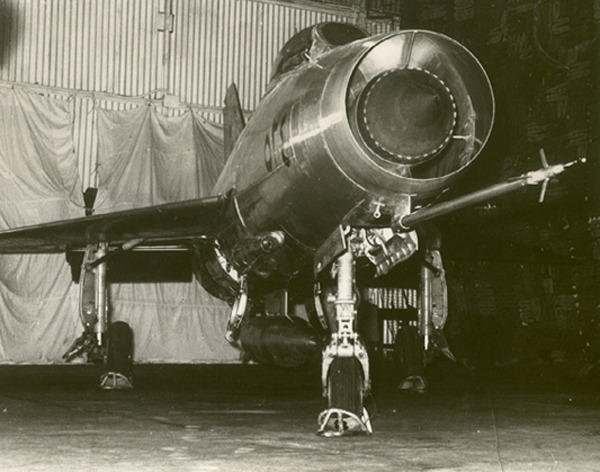
Redfa’s MiG-21 in Hatzor, August 16th, 1966
Operational Service:
Following the operation, the aircraft was repainted with Israeli Air Force roundels and assigned the tail number “007”, chosen by Ezer Weizman as a nod to the James Bond-style nature of the mission.
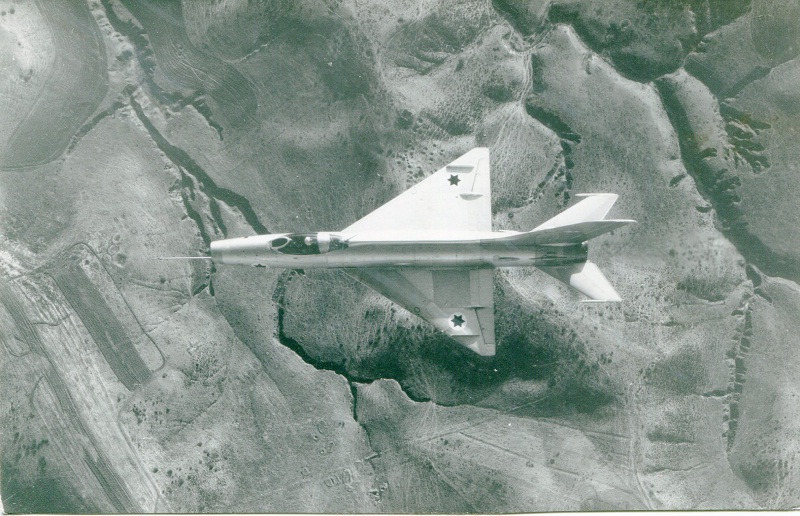
“007” in silver Israel Air Force camo, IAF archive photo
The MiG was then used in extensive testing to evaluate its flight performance and train Israeli pilots flying the Vautour, Super Mystère, and Mirage III on how to fight against it. Renowned Israeli test pilot Danny Shapira assisted by Redfa himself (where they also became very close friends), translated cockpit labels into Hebrew and English and conducted multiple flight evaluations.
The insights gained proved vital in later conflicts, including the Six-Day War (1967), the War of Attrition (1970), and the Yom Kippur War (1973), allowing Israeli pilots to exploit the MiG-21’s weaknesses in combat.

Danny Shapira besides the “007”
But “007” wasn’t just a test aircraft, aggressor trainer or a parade and airshows attraction. During the tense period leading up to the Six-Day War, the aircraft was repainted in silver with red stripes (at Shapira’s request to avoid friendly fire) and uniquely armed with Shafrir-2 missiles — even before they were officially in service. It was placed on combat alert as an interceptor to counter Egyptian MiG-21R reconnaissance jets, which flew at altitudes and speeds Israeli Mirages could not reach.
Getting the aircraft combat-ready was a remarkable feat of engineering, as Israeli crews had neither spare parts nor technical documentation for Soviet systems. Although “007” was on high alert, it did not see action during the war.
Aftermath in Area 51:
Spoiler
As a final note, the aircraft was later delivered to the United States, where it was tested by the USAF under the designation YF-110 at Area 51 during Project “Have Doughnut”. This cooperation is believed to have paved the way for lifting the U.S. arms embargo on Israel, eventually leading to the delivery of A-4 Skyhawks and F-4 Phantoms.
Specifications:
- Crew: 1
- Length: 14,1m
- Wingspan: 7,15m
- Height: 4,13m
- Empty weight: 4,871kg
- Max take-off weight: 8,386kg
- Max speed: 2,175 km/h (~1,300km/h on sea level)
- Service ceiling: 19,000m
- Combat radius: 600km
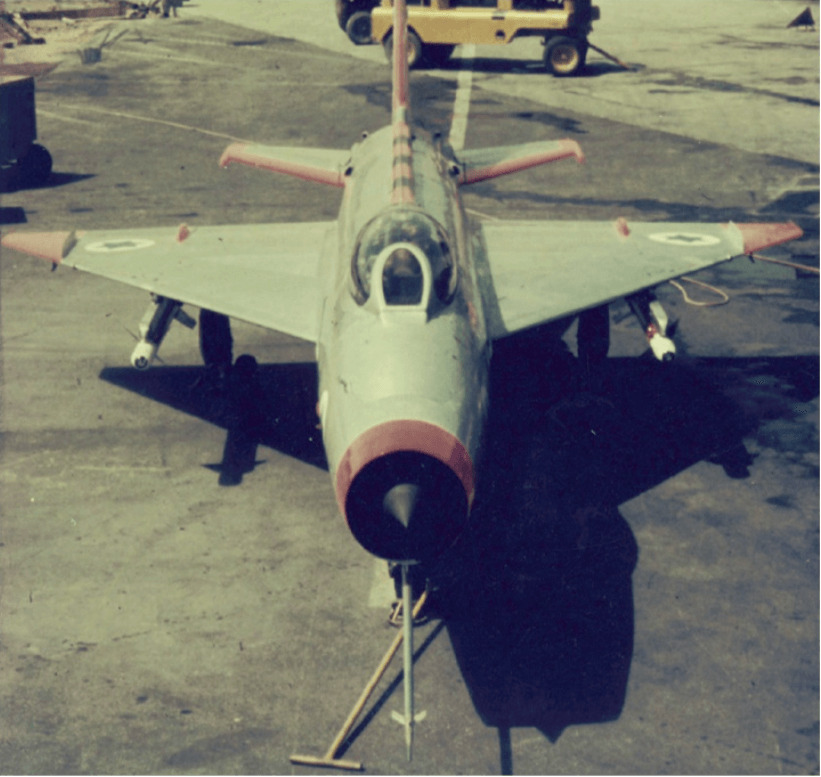
Armament:
- 1x NR-30 30mm cannon (60 rounds)
- 2x Shafrir-2
- 1x Drop tank (490 liters.)
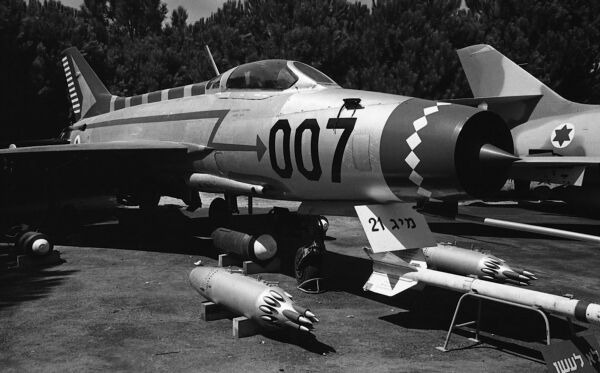
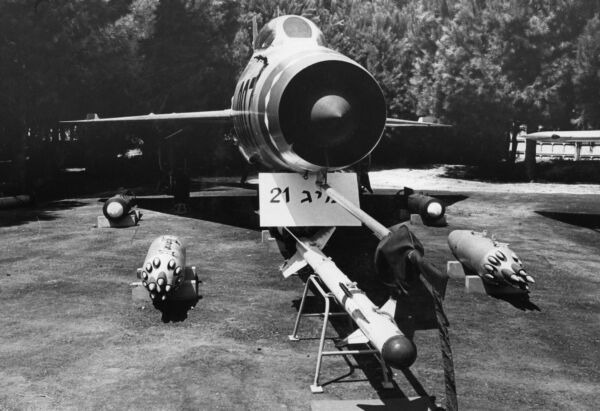
- 2x R-3S
- 2x rocket pods with 16×S-5K
- 2x FAB-250 or similar
Camouflages
Spoiler
- A WT Live skin for the USSR MiG-21F-13 exists, is available and inspired part of this suggestion: WT Live // Camouflage by ShqiptarWARRIOR
Redfa’s MiG-21F-13 “007” would make a fantastic addition to the Israeli tech tree as a Rank VI Squadron or Event aircraft. Historically unique and interesting, it combines Soviet technology and Israeli early weaponry. This vehicle offers excellent speed and climb rate, ideal as an interceptor in its bracket. It would also bring variety to the Israeli lineup, which currently lacks lightweight high-speed fighters at this tier.
Sources:
Spoiler
- Israel Film Archive, “Operation Diamond” (1966)
- Israel Air Force, “45th anniversary of the MiG-21landing in Hatzor” (2011)
- Israel Air Force, “Behind the Scenes of Operation Diamond” (2016)
- Israel Air Force, " What has the IAF Learned from Defecting Pilots?" (2017)
- Israel Intelligence Heritage Center, "Operation Diamond (Blue Bird) (2017)
- Sipos, Milos; Cooper, Tom (2020). Wings of Iraq, Volume 1: The Iraqi Air Force, 1931-1970.
Current bug reports on the MiG-21F-13 (USSR):
Spoiler
- Drop tank too light: Community Bug Reporting System
- Underpreforming G-pull: Community Bug Reporting System
